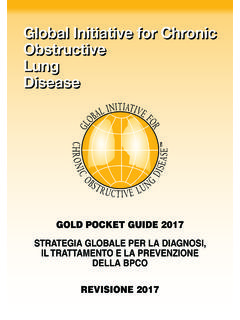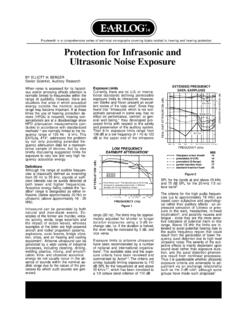Transcription of Ecuador - WHO
1 2005 world health OrganizationMental Healthatlas174E IEcuadorGENERAL INFORMATIONE cuador is a country with an approximate area of 284 thousand sq. km. (UNO, 2001). Its population is million, and the sex ratio (men per hundred women) is 101 (UNO, 2004). The proportion of population under the age of 15 years is 32% (UNO, 2004), and the proportion of population above the age of 60 years is 7% (WHO, 2004). The literacy rate is for men and for women (UNESCO/MoH, 2004).The country is a lower middle income group country (based on world Bank 2004 criteria). The proportion of health budget to GDP is The per capita total expenditure on health is 177 international $, and the per capita government expenditure on health is 89 international $ (WHO, 2004).
2 The main language(s) used in the country is (are) Spanish and Quichua. The largest ethnic group(s) is (are) Indian and Mestizo, and the other ethnic group(s) are (is) European. The largest religious group(s) is (are) Roman life expectancy at birth is years for males and years for females (WHO, 2004). The healthy life expectancy at birth is 60 years for males and 64 years for females (WHO, 2004). EPIDEMIOLOGYA guilar (1989, 1990) conducted a study on a probabilistic random sample of 6000 individuals, representative of the country s entire population, between the ages of 10 and 65, using questionnaires to assess the prevalence of alcohol, smoking and other illegal substance use and misuse. The rates of lifetime use reported were as follows: alcohol (75%), tobacco (54%), tranquilizers (16%), marijuana (4%), inhalants (2%), native plant drugs (1%), cocaine (1%) and cocaine base (1%).
3 The highest prevalence of substance misuse corresponded to the consumption of alcohol and tobacco (13%), followed by tranquilizers ( ), opiates ( ), barbiturates and marijuana ( ) and cocaine base ( ). Ockene et al (1996) evaluated 800 subjects who were representative of the adult population of two cities and reported that one-third of the population smoked. Smoking was more common in males and in younger and educated subjects. Women smoked lesser number of cigarettes. Padgett et al (1998) assessed more than 2600 students from 40 communities spread across rural and urban settings. They found that 9% were current smokers and had never smoked. Older boys and those with smokers in their families were more likely to smoke. Morillo et al (2002) conducted a population based study in Ecuador , Columbia and Venezuela to study the prevalence of erectile dysfunction (ED) in men aged 40 years and above.
4 A 49-item questionnaire was completed by 1946 men and the age-adjusted combined prevalence of minimal, moderate and complete ED for all three countries was , with of all men reporting moderate to complete ED. People above 70 years and those with comorbid medical conditions suffered more compared to those below 50 years of age. Lima et al (1989, 1992) interviewed 150 patients attending a primary care centre 2 months after the 1987 earth-quake. They found emotional disturbances in 40% of the population. The risk factors were not being married, reporting poor physical or emotional health and having ill-defined physical complaints. In a gold-mining area, Counter et al (1998 a, b) found neurocognitive deficits in village children with chronic exposure to lead because of the ceramics industry.
5 Gorenc et al (1999) found that suicides tended to be under-reported in Mexico (42 per 100 000) and Ecuador ( per 100 000), especially in men using passive or soft health RESOURCESM ental health Policy A mental health policy is present. The policy was initially formulated in components of the policy are promotion, prevention, treatment and rehabilitation. It was revised in 1999 by mental health pro-fessionals, civil servants and NGOs. There are no regular funds for its implementation and less than 10% of its original content was put into Abuse Policy A substance abuse policy is present. Details about the year of formulation are not available. There is also specific legislation for substance abuse from Mental health Programme A national mental health programme is present.
6 The programme was formulated in was revised in 1999. It was implemented less than by regional and national authorities, probably because there was no specific budget for its implementation. Its main components are strategy of services reform, integration of mental health services at primary health care and development of specialized Therapeutic Drug Policy/Essential List of Drugs A national therapeutic drug policy/essential list of drugs is present. It was formulated in health Legislation The Mental health Act was revised in 2001. There are no regular funds for its implementation, and it has been implemented to the extent of 10 to 25 %. It focuses on promotion and prevention, human rights and regulation of mental health services, but there is no reference to regulation of involuntary latest legislation was enacted in health Financing There are no budget allocations for mental about expenditure on mental health are not primary source of mental health financing is out of pocket expenditure by the patient or country has disability benefits for persons with mental disorders.
7 Mental disabilities are considered disabilities under Law 180. The evaluation is done by a psychiatrist and reviewed by the National Disability Council. Chronic psychosis, mental retardation, dementia and certain epilepsies are considered for disability benefits. 2005 world health OrganizationMental Healthatlas175E IMental health Facilities Mental health is a part of primary health care system. Actual treatment of severe mental disorders is not available at the primary level. Less than 25% of the population is covered by this kind of service. Mental health care is provided by Primary health Care doctors. A referral system is in training of primary care professionals is carried out in the field of mental health . In the last two years, about 250 personnel were provided training.
8 General physicians, nurses, social workers and educators are provided a 30 hour training in mental are no community care facilities for patients with mental disorders. The community care system covers for one-fourth of the intended patient group. It includes preventive/promotion, home interventions and family interventions. Nurses are responsible for taking care of patients with mental disorders in the community. Psychiatric Beds and ProfessionalsTotal psychiatric beds per 10 000 population beds in mental hospitals per 10 000 population beds in general hospitals per 10 000 population beds in other settings per 10 000 population 0 Number of psychiatrists per 100 000 population of neurosurgeons per 100 000 population Number of psychiatric nurses per 100 000 population of neurologists per 100 000 population Number of psychologists per 100 000 population of social workers per 100 000 population personnel refer to those in the public sector only.
9 Almost 50% of nurses, 80% of psychiatrists and 95% of psychologists work in the private Organizations NGOs are involved with mental health in the country. They are mainly involved in prevention, treatment and rehabilitation. These organizations participate in mental health activities related to women, children and domestic Gathering System There is mental health reporting system in the country. Information is recorded utilizing ICD-10. The mental health components reported are morbidity, admission and discharge. Depression, suicide, psychosis, drug abuse and dependence, epilepsy, mental retardation, violence and child abuse are the conditions country has data collection system or epidemiological study on mental health . The Departamento Nacional de Estat sticas (National Department of Statistics) is in charge of the data collection system for mental disorders.
10 It is stated that the main psychiat-ric problems are alcohol abuse and dependence ( %), affective disorders, particularly depression (approximately 16 %), psycho-social problems like domestic violence and child for Special Population The country has specific programmes for mental health for disaster affected population, indigenous population, elderly and children. Also, there are programmes for victims of domestic Drugs The therapeutic drug policy was revised in 1996. An essential drug list was created in 1976 and revised in 1996. Prices of medication are subsidized. Other InformationAdditional Sources of InformationAguilar, E. (1989) Prevalence of the improper use of alcohol, tobacco and drugs in the Ecuadorian population.















